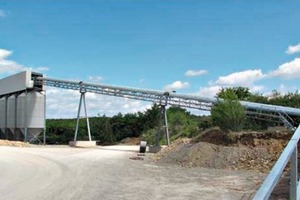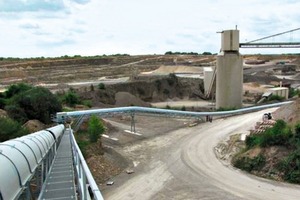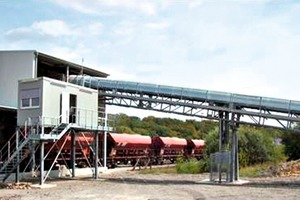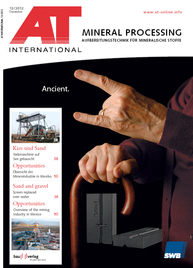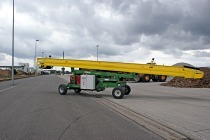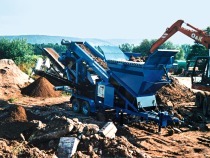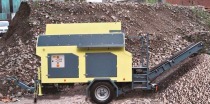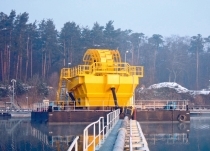Modern rail loader
The sale and distribution of raw materials in the construction industry is steadily growing in importance. Besides supply of a wide range of sands, gravels and chippings in sufficient quantities, efficient delivery to the customers by means of suitable transport, depending on distance, transport volume and transport connections, must be ensured. Besides delivery by truck and ship, rail transport is becoming increasingly important. Depending on the location and facilities at the raw material extraction operation, with rail transport it is possible to reach customers at a further distance away at a lower cost and environmental impact than by road.
The Walbeck limestone works owned by Hermann Wegener GmbH & Co. KG already had a rail siding at the site, which was occasionally used to supply “rail customers”. The aim was to develop this channel of distribution to supply existing customers better and faster as well as to get new customers. To this end, in 2009 SWO-Foerdertechnik GmbH in Bad Schandau was called in to design a rail loader. One of the reasons for this was the company’s many years of experience in this field with the installation of comparable equipment at SBU in Zeithain, at the Boerner gravel works and rock quarry at the Saale-Dreieck and at MdB in Quedlinburg. All these units operate at loading rates of 800-1000 t/h without any interruption in the material delivery when loading block trains, providing the rail sidings allow it. The advantages are obvious: very short loading times with minimized labour requirement.
The objective at Walbeck limestone works was to ensure that loading of trucks and train waggons is independent of each other and without any “material bottlenecks”. This meant setting up an additional storage facility for rail transport. The company opted for a silo facility, initially with six silos with a capacity of around 600 t (Fig. 1). A possible later increase in capacity was taken into account in the planning. The silos are filled via an around 60 m3 feed bin in the immediate vicinity of the product stocks and truck loading, which is connected with a belt conveyor running over several hundred metres (Fig. 2). The product is loaded by means of the silo discharge with combined metering installations, the feed belts with a belt width of 1200 mm and the mobile, reversible loading conveyor with a belt width of 1400 mm (Fig. 3).
Control of the plant is to guarantee simple but safe loading of the rail waggons, while simultaneously enabling ongoing filling of the silo. Two identical workstations with visualization at the railway and dispatcher processing plant that are expediently interlocked with each other enable this procedure. While Workstation 1 controls and monitors filling of the silo, Workstation 2 is responsible for filling the waggons. The waggon lists are created with all the necessary specifications such that an appropriate interface can transfer the data to the operations follow-up system for the creation of delivery note and invoice in the Wegener Group’s “usual system”.
Following completion of the plans and receipt of the necessary approvals, in late 2010 SWO Fördertechnik was awarded the contract to build the plant as the general contractor for Hermann Wegener GmbH & Co. KG. Besides supply of the steel structure and the conveying equipment, the foundations work, construction of the tracks, power supply and control system were included in the scope of supply.
In close cooperation with the responsible employees at Hermann Wegener and the supplies, the plant could be commissioned in early autumn 2011. Already during the trial operation, the company received a very positive response from potential “rail customers”. The loading volumes were soon increased and the variety of grades supplied widened. The concept of increasing rail transport to existing customers and winning new customers has been shown a success. Just one year after commissioning, the installation is being extended with two more silos in line with the original plans.

